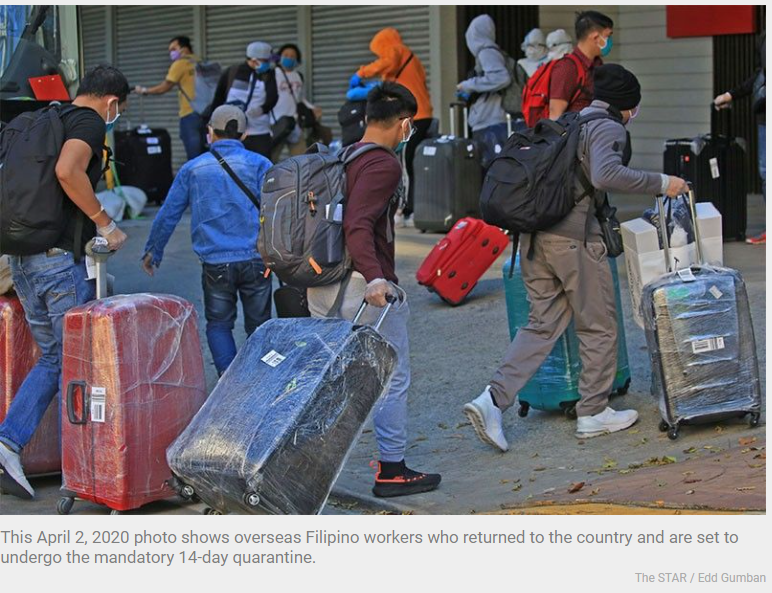Philippines: Showing limits of labor migration, pandemic cut OFW deployment in 2020
MANILA, Philippines — The number of overseas Filipino workers contracted by nearly a fifth in 2020, demonstrating the pandemic’s damage on global job markets that, an analyst said, may take long to be fixed.
There were an estimated 1.77 million migrant Filipino workers in 2020, according to results of an annual survey by the Philippine Statistics Authority released Tuesday. This was 18.6% lower compared to 2.3 million OFWs recorded in 2019, or before the pandemic roiled global economies.
The 2020 survey, which was released over a year later, covered Filipinos working abroad from April to September. OFWs who were at home on vacation before April were included in the survey as long as they returned to their host countries during the six-month period of the report.
The slump in number of OFWs resulted in a massive drop in remittances, a major source of dollar for the economy. PSA data showed remittances in 2020 — which included cash and in-kind transfers — amounted to P134.77 billion, down 35.9% compared to 2019.
Sought for comment, Jeremiah Opiniano, professor at the University of Santo Tomas and executive director at the Institute for Migration and Development Issues, said the survey results offered “hard” lessons on the realities of migrant work.
Citing data from Philippine Overseas Employment Administration, Opiniano said there were 549,841 new hires and rehired OFWs that went abroad in 2020, nearly three-fourths lower than the 2019 deployment figure of 2.2 million.
“The lessons from these recent (survey) findings are: Overseas employment may not be forever, this being a hard lesson to us by the pandemic,” Opiniano said.
“Do not be surprised though that future SOF surveys will see rising OFW numbers, because those OFWs who returned home will try to find ways to repeat their overseas migration,” he added.
Broken down, PSA data also showed that Filipino expats on work contracts accounted for 96.4%, equivalent to 1.71 million, of the total 2020 estimate.
The PSA said the average remittance sent by OFWs was slashed 18.6% to P86,810 from April to September 2020. This was lower compared to the average amount sent in the same period in 2019.
“OFWs’ remittances, again with reference to temporary migrant workers, were visibly hit given the nearly-P20,000 reduction. Those returnees need lots of interventions surrounding their ongoing reintegration back home,” Opiniano said.
The delayed return to normalcy of international labour migration could prove costly for the Philippine economy, as remittances account for 9.66% of gross domestic product in 2020. In a research paper penned by Opiniano for the International Organization for Migration, he pointed out that “international labor migration that spans almost all occupations will not immediately return to pre-pandemic levels, except for some increased demand in identified professions (e.g., health workers).”
The PSA survey revealed that four in ten OFWs were engaged in elementary occupations, such as housework, cleaning and restocking supplies and performing basic maintenance, and kitchen work in 2020.
Meanwhile, Saudi Arabia remains the leading destination of OFWs.
For Nicholas Antonio Mapa, senior economist at ING Bank in Manila, said remittances were nevertheless resilient during the pandemic. “We’ve seen remittances almost flat, a testament to how dependable and robust a source of forex remittances can be,” Mapa said in a Viber message.
Source: https://www.philstar.com/business/2022/03/08/2165821/showing-limits-labor-migration-pandemic-cut-ofw-deployment-2020


 Thailand
Thailand




